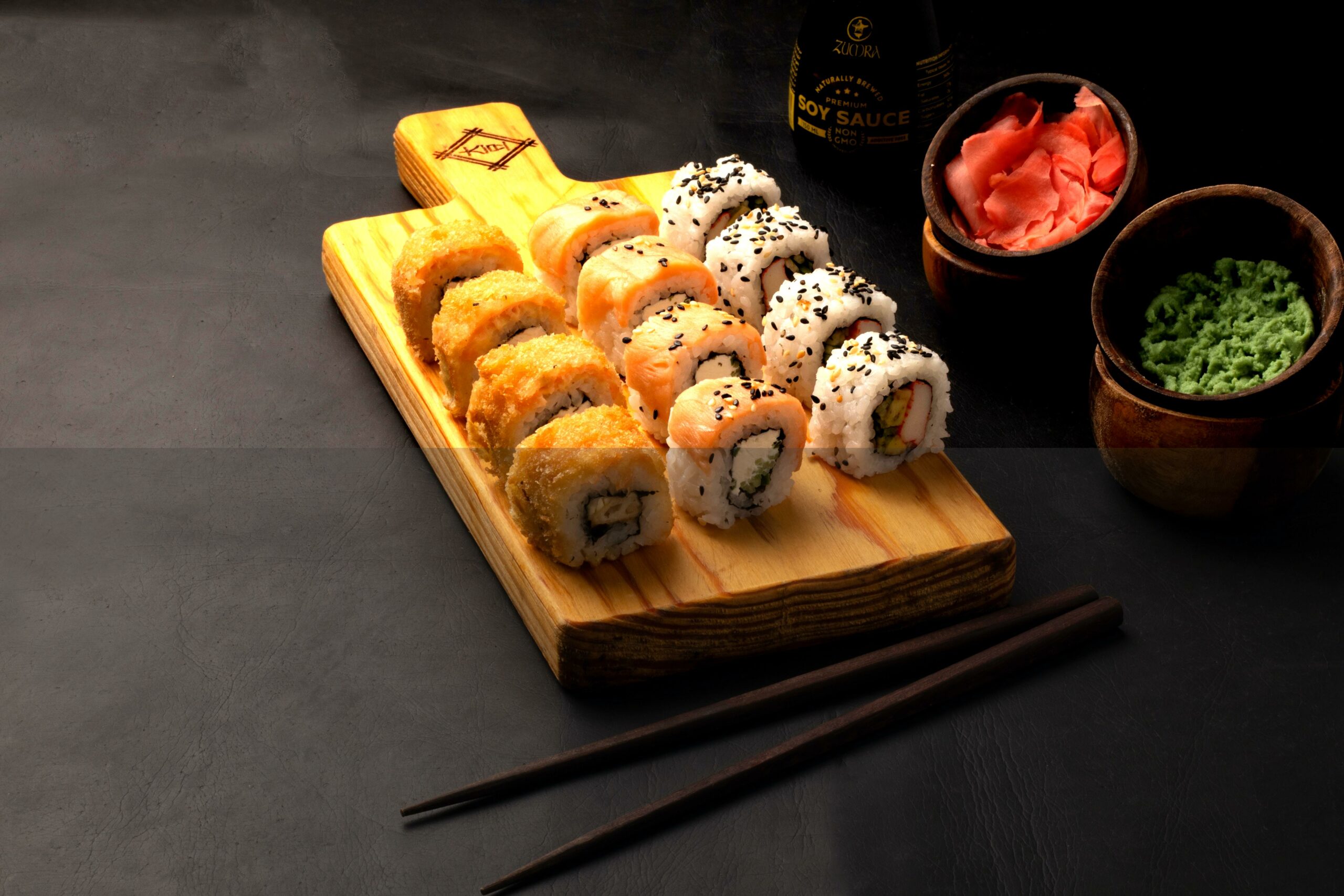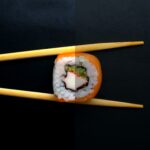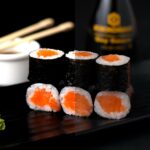Are you ready to dive into the fascinating world of sushi rolls? Prepare to be amazed as we uncover the hidden delights of this beloved Japanese delicacy. In this article, we will embark on a journey of discovery, exploring lesser-known facts about sushi rolls that will leave you hungry for more. From the history behind its creation to the secret ingredients that make each roll truly unique, get ready to be blown away by the intriguing tales that lie beneath the surface. So grab your chopsticks and get ready for a sushi adventure like no other, as we unravel the mysteries and unveil the hidden delights of lesser-known sushi roll facts.
Lesser-Known Facts About Sushi Rolls
Sushi rolls, with their delicate balance of flavors and textures, have captivated people around the world. But beyond the surface of these delectable creations lies a trove of lesser-known facts that add depth and intrigue to the art of sushi-making. Let’s journey together and uncover some hidden gems about sushi rolls that even avid sushi aficionados may be oblivious to.
- Sushi Rice: More Than Just a Bed of Grains
When enjoying sushi, it’s important to know that the rice should not be dipped in soy sauce. In fact, it is considered sloppy and disrespectful to the chef if the rice becomes saturated and falls apart. Instead, the soy sauce should only touch the fish part of the roll. By doing so, you preserve the delicate balance of flavors that the sushi chef has carefully crafted.
Remember, dipping the entire sushi roll in soy sauce is a no-no! Let the fish take center stage.
- The Global Origins of Popular Sushi Rolls
While sushi is undoubtedly an iconic Japanese dish, some of the most popular rolls we enjoy today were actually invented in the USA. The Philadelphia roll, with its unique combination of smoked salmon, cream cheese, and cucumber, originated in the city of brotherly love. Similarly, the California roll, featuring avocado, imitation crab meat, and cucumber, was first created in Los Angeles. These American innovations have made sushi more accessible and diverse worldwide.
Who would have thought that some of our favorite sushi rolls have American roots?
- Wasabi: A Spicy Tradition
Have you ever wondered why wasabi is served alongside sushi? Contrary to popular belief, it is not meant to add flavor to the sushi itself. Instead, wasabi is a condiment that is traditionally used to combat any potential bacteria on raw fish. Its pungent flavor and spicy kick also enhance the overall sensory experience of eating sushi, awakening your taste buds with every bite.
Remember, wasabi is not just a flavorful additive, but a traditional accompaniment to sushi.
- The Delicate Art of Handling Sushi
In Japan, eating sushi is not a mere culinary experience; it’s also a cultural one. Unlike the typical image of using chopsticks, sushi is commonly eaten with your hands. This tactile approach allows you to savor the textures and flavors more intimately, creating a direct connection between you and the delicate craftsmanship of the sushi chef.
In Japan, forget the chopsticks. Dive in with your hands and relish the authentic experience of sushi.
- Expanding the Sushi Wrapper Palette
When envisioning sushi, most of us imagine the classic seaweed-wrapped rolls known as Norimaki. But did you know that sushi can also be wrapped in other types of wrappers? Soy paper, cucumber, or even thinly-sliced vegetables like radish provide alternative, refreshing casings for sushi rolls. These variations not only add visual appeal but also offer unique flavor profiles.
Think outside the wrapper! Explore the world of sushi with unconventional and tasty options.
- Behind the Scenes: The Training of Sushi Chefs
Have you ever marveled at the precision and artistry of sushi preparation? It’s no accident; sushi chefs undergo extensive training to master their craft. They spend years honing their knife skills, learning how to select the freshest ingredients, and perfecting the art of sushi assembly. The result is a beautiful harmony of taste, texture, and presentation that delights sushi enthusiasts worldwide.
Behind each sushi masterpiece lies the dedication and mastery of a skilled sushi chef.
- The Historical Beginnings of Sushi
While sushi is now synonymous with Japan, its origins actually trace back to China and other Asian cultures. In ancient times, fresh fish was preserved by fermenting it with rice, a process that involved packing the fish tightly with salt and rice. Over time, this preservation method evolved, and sushi as we know it today emerged. It’s fascinating to see how a culinary tradition can evolve and transcend cultural boundaries.
Sushi’s journey from China to Japan is a testament to the power of culinary adaptation and cultural exchange.
- The Fish, Not the Rice, Defines Sushi
Contrary to popular belief, the name “sushi” actually refers to the rice and not the fish. The vinegared rice, combined with various toppings and fillings, creates the foundation for sushi. The harmony between the rice and the carefully selected fish or other ingredients gives sushi its unmistakable character. So the next time you enjoy sushi, appreciate the role of the rice in this culinary masterpiece.
Remember, sushi is all about the perfect balance between the rice and the tantalizing toppings.
- The Health Benefits of Sushi
Apart from being a culinary delight, sushi offers a range of health benefits. The omega-3 fatty acids found in fish varieties like salmon and tuna are known for promoting heart health and reducing the risk of certain diseases. Additionally, sushi often incorporates nutrient-dense vegetables like avocado and seaweed, providing essential vitamins and minerals. So next time you savor a sushi roll, know that you’re not just pleasing your taste buds but also nourishing your body.
Indulge in sushi guilt-free, knowing that it brings a wealth of health benefits to the table.
- A World of Sushi Varieties
Sushi is not a one-size-fits-all delicacy. It comes in a variety of forms, each with its own unique characteristics. Makizushi, hand rolls, Nigirizushi, Chirashizushi… the list goes on. Each variety has its own preparation method and flavor profiles, offering a diverse range of options for sushi enthusiasts to explore.
Dive into the vast ocean of sushi varieties and discover your personal favorite.
In the realm of sushi rolls, there is always more than meets the eye. Unraveling these lesser-known facts not only adds depth to our appreciation of this culinary art but also ignites our curiosity to explore the untold tales behind every morsel. So next time you enjoy a sushi roll, remember the hidden delights and stories that lie within. Happy sushi adventures!
Sushi rolls are not just a delicious dish; they are a culinary art form. If you’re a fan of sushi or simply curious about this Japanese delicacy, you must check out these fascinating facts about sushi rolls. From their origins in feudal Japan to their modern-day popularity around the world, sushi rolls have a captivating history that will leave you craving for more.
To uncover the intriguing facts about sushi rolls, click here: facts about sushi rolls.
Now that you’ve clicked the link, get ready to be amazed by the rich cultural heritage and mouthwatering flavors of sushi rolls. Dive into the world of sushi and explore its many varieties, ingredients, and preparation techniques. Whether you’re a sushi connoisseur or a novice, these facts will deepen your appreciation for this beloved cuisine.
So, what are you waiting for? Indulge your curiosity and embark on a sushi adventure with these mind-blowing facts about sushi rolls. Prepare to be amazed and delighted by the incredible journey that sushi has taken throughout history. Click here to start your exploration now.
FAQ
Question: Why should you not dip the sushi rice in soy sauce?
Answer: Dipping the sushi rice in soy sauce is considered sloppy as it can cause the rice to become saturated and fall apart. It is recommended to only dip the fish part of the sushi roll in soy sauce.
Question: Which country invented the popular Philadelphia and California rolls?
Answer: Contrary to popular belief, the Philadelphia and California rolls were actually invented in the USA, not in Japan.
Question: What is the purpose of wasabi in sushi?
Answer: Wasabi is not a flavor additive, but a condiment that is traditionally served with sushi. It adds a spicy kick and helps to enhance the overall flavor of the sushi.
Question: How is sushi commonly eaten in Japan?
Answer: In Japan, sushi is commonly eaten with your hands, rather than chopsticks. This tradition allows for a more intimate and tactile experience with the sushi.
Question: Can sushi be wrapped in types of wrappers other than seaweed?
Answer: Yes, sushi can be wrapped in other types of wrappers besides seaweed. Different variations of sushi, such as Inarizushi, use tofu pouches as the wrapper instead of seaweed.
- Unlocking TEA Words: Comprehensive Analysis & Lexical Insights - April 29, 2025
- Unlock Sustainable Farming:Achievable Crop Yields Now - April 29, 2025
- Unlock Your Potential: Words With Inspiration for Lasting Success - April 28, 2025
















